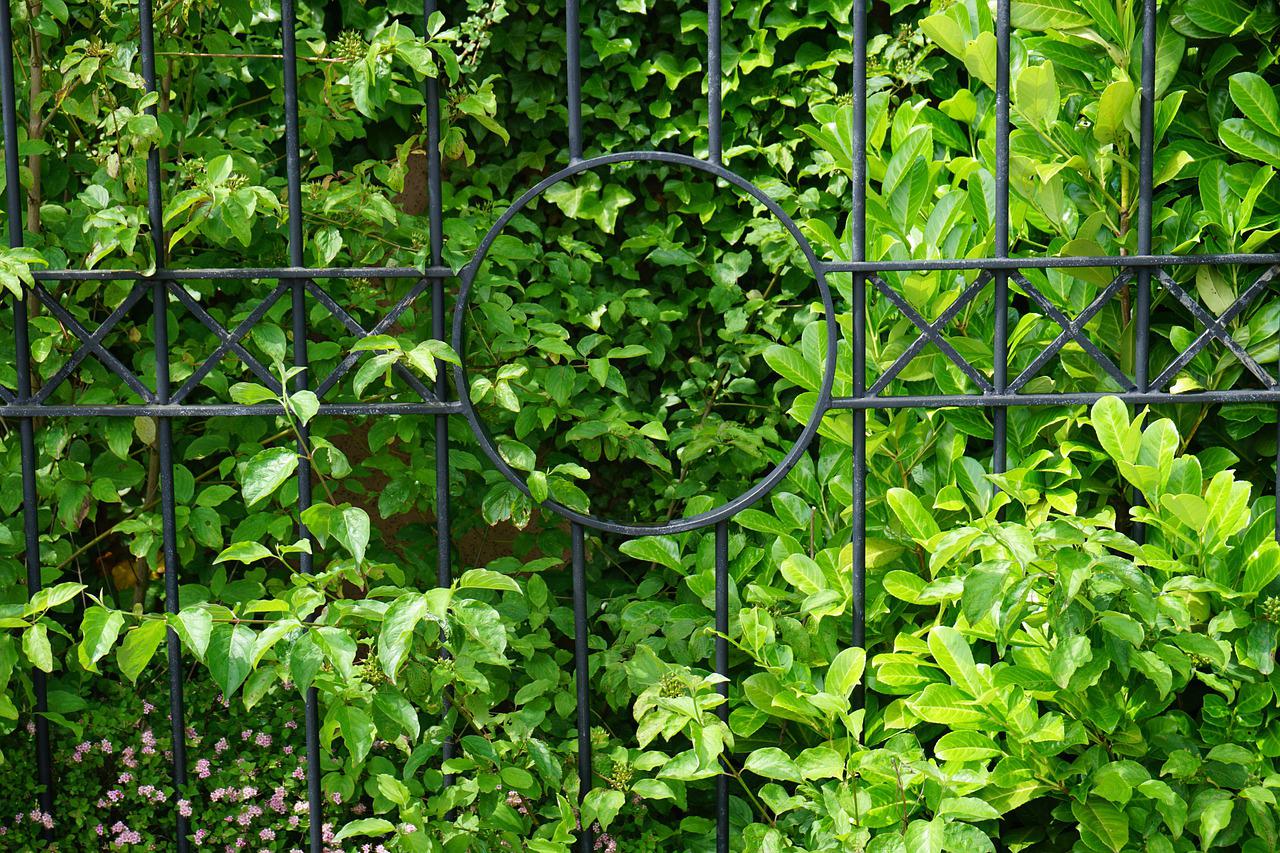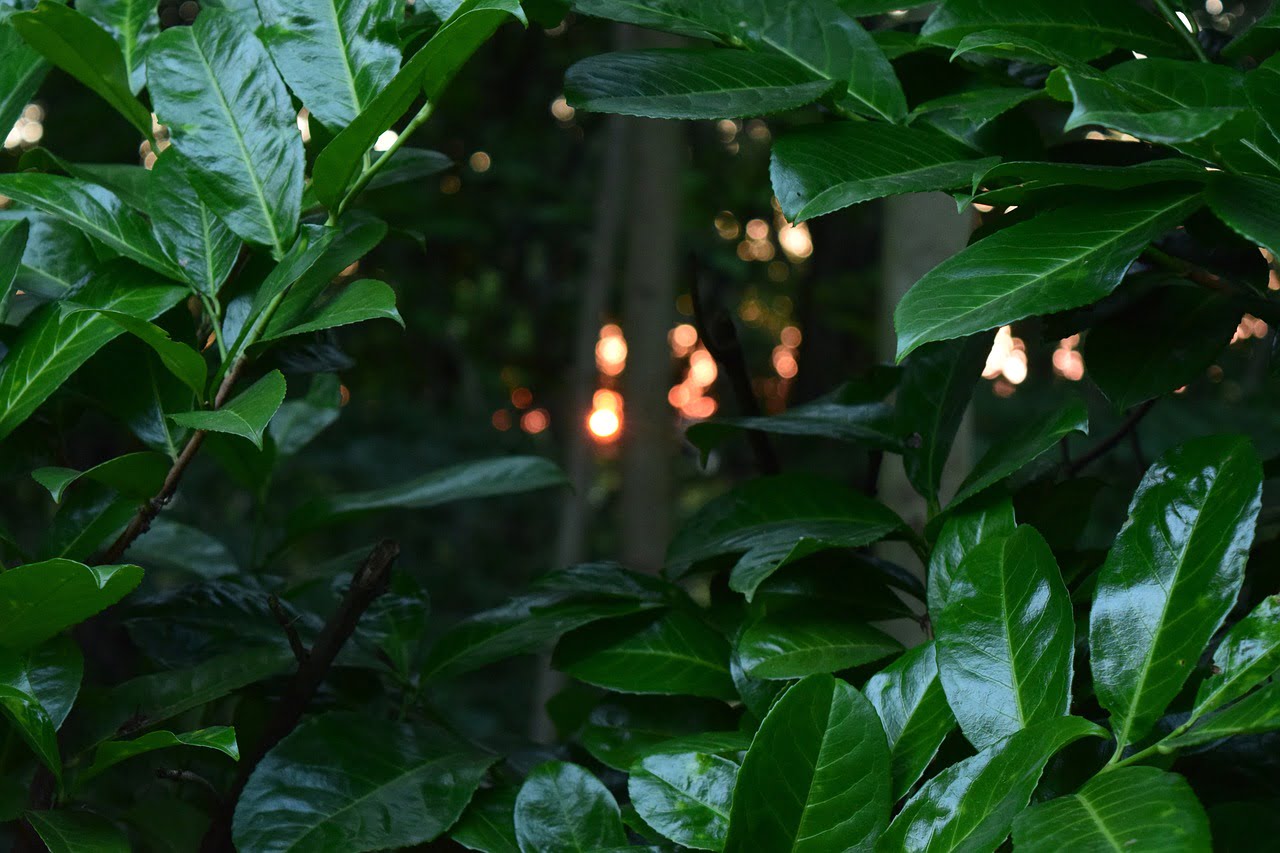Hi @nad
Thanks for your question about Laurel shrubs and their roots.
What types of laurel are there?
There are several Laurel species, so it's important to identify which plant species we are dealing with. I'm going to assume it is either 'Bay' Laurel (Laurus nobilis) or Cherry Laurel (Prunus laurocerasus).
Common laurel species listed below will have different characteristics.
- Prunus laurocerasus (Cherry Laurel)
- Prunus lusitanica (Portuguese Laurel)
- Prunus laurocerasus 'Etna'
- Prunus laurocerasus 'Caucasica'
- Laurus nobilis (Bay)
It's always worthwhile trying to identify the exact species of any given plant such as Laurel as this will help guide advice and pruning.
It would be super helpful if you could let us know how big the Laurel is and, ideally add a picture to this forum. Below is an example of Cherry laurel on the right for other readers of this hedging plant type. I'm going to assume it's either Cherry Laurel or a Bay Laurel. If you're looking to buy Laurel shrubs, then Thompson & Morgan have a great selection on maill order here. (This is an affiliate link so if you do choose to buy receive a small commission that helps keep this blog free to use!)

How big can Bay Laurel get?
Bay Laurel is one of the slower-growing laurels for hedging. Growing just 10cm a year. Making it super easy for pruning and growth control. You can also hard prune these back easily without any drama.. You can tell if it's a bay Laurel as the leaves are matt evergreen, not glossy green. They are also smaller and more delicate than Cherry Laurel leaves.
How big can cherry laurel get?
Cherry laurels are a fast-growing shrub or hedging plant. Usually found on new build housing estates as a quick way of screening off properties with a glossy evergreen foliage.They can get up to 5m tall and 3-4meters wide if left unpruned. Though it will take 10-15 years to reach this ultimate size.
How much does cherry laurel grow in a year?
They can grow upto 60cm a year when established. Usually, around 30--60cm per year.
Are Cherry laurels invasive?
Although Laurel, Prunus laurocerasus, also known as Cherry Laurel can grow upto 5m tall their roots are not normally known to be invasive.
Why do tree roots cause damage to buildings?
It's important to address why most tree roots cause damage to buildings, fences or foundations. It's not because their roots penetrate concrete foundations but because of their water usage drying out the soil. Large trees, in particular conifers can literally suck the moisture out of the ground, causing its texture, structure and density to change. This, in turn, can cause a shift in building foundations. Due to the fact, the soil structure has changed and the buildings weight and foundations were not originally built for that type of ground, so things can shift and move.

Unless your Laurels are super huge, I very much doubt that they are causing any issues. Especially given the fact they will be removing moisture, so even if they are near a land drain they are probably beneficial for this purpose.
The best course of action with neighbours is to try and resolve it amicably. May be ask to inspect whatever evidence your neighbour thinks they have. Another idea is to hire a professional arborist to come and do some digging and write a report. That way, it can take the heat out of the issue.
If you can upload photos on this thread then the Ninjas can help with more specific advice.
Happy gardening!
Hi @nad
Thanks for your question about Laurel shrubs and their roots.
What types of laurel are there?
There are several Laurel species, so it's important to identify which plant species we are dealing with. I'm going to assume it is either 'Bay' Laurel (Laurus nobilis) or Cherry Laurel (Prunus laurocerasus).
Common laurel species listed below will have different characteristics.
- Prunus laurocerasus (Cherry Laurel)
- Prunus lusitanica (Portuguese Laurel)
- Prunus laurocerasus 'Etna'
- Prunus laurocerasus 'Caucasica'
- Laurus nobilis (Bay)
It's always worthwhile trying to identify the exact species of any given plant such as Laurel as this will help guide advice and pruning.
It would be super helpful if you could let us know how big the Laurel is and, ideally add a picture to this forum. Below is an example of Cherry laurel on the right for other readers of this hedging plant type. I'm going to assume it's either Cherry Laurel or a Bay Laurel. If you're looking to buy Laurel shrubs, then Thompson & Morgan have a great selection on maill order here. (This is an affiliate link so if you do choose to buy receive a small commission that helps keep this blog free to use!)

How big can Bay Laurel get?
Bay Laurel is one of the slower-growing laurels for hedging. Growing just 10cm a year. Making it super easy for pruning and growth control. You can also hard prune these back easily without any drama.. You can tell if it's a bay Laurel as the leaves are matt evergreen, not glossy green. They are also smaller and more delicate than Cherry Laurel leaves.
How big can cherry laurel get?
Cherry laurels are a fast-growing shrub or hedging plant. Usually found on new build housing estates as a quick way of screening off properties with a glossy evergreen foliage.They can get up to 5m tall and 3-4meters wide if left unpruned. Though it will take 10-15 years to reach this ultimate size.
How much does cherry laurel grow in a year?
They can grow upto 60cm a year when established. Usually, around 30--60cm per year.
Are Cherry laurels invasive?
Although Laurel, Prunus laurocerasus, also known as Cherry Laurel can grow upto 5m tall their roots are not normally known to be invasive.
Why do tree roots cause damage to buildings?
It's important to address why most tree roots cause damage to buildings, fences or foundations. It's not because their roots penetrate concrete foundations but because of their water usage drying out the soil. Large trees, in particular conifers can literally suck the moisture out of the ground, causing its texture, structure and density to change. This, in turn, can cause a shift in building foundations. Due to the fact, the soil structure has changed and the buildings weight and foundations were not originally built for that type of ground, so things can shift and move.

Unless your Laurels are super huge, I very much doubt that they are causing any issues. Especially given the fact they will be removing moisture, so even if they are near a land drain they are probably beneficial for this purpose.
The best course of action with neighbours is to try and resolve it amicably. May be ask to inspect whatever evidence your neighbour thinks they have. Another idea is to hire a professional arborist to come and do some digging and write a report. That way, it can take the heat out of the issue.
If you can upload photos on this thread then the Ninjas can help with more specific advice.
Happy gardening!
 Lee Burkhill: Award Winning Designer & BBC 1's Garden Rescue Presenters Official Blog
Lee Burkhill: Award Winning Designer & BBC 1's Garden Rescue Presenters Official Blog



